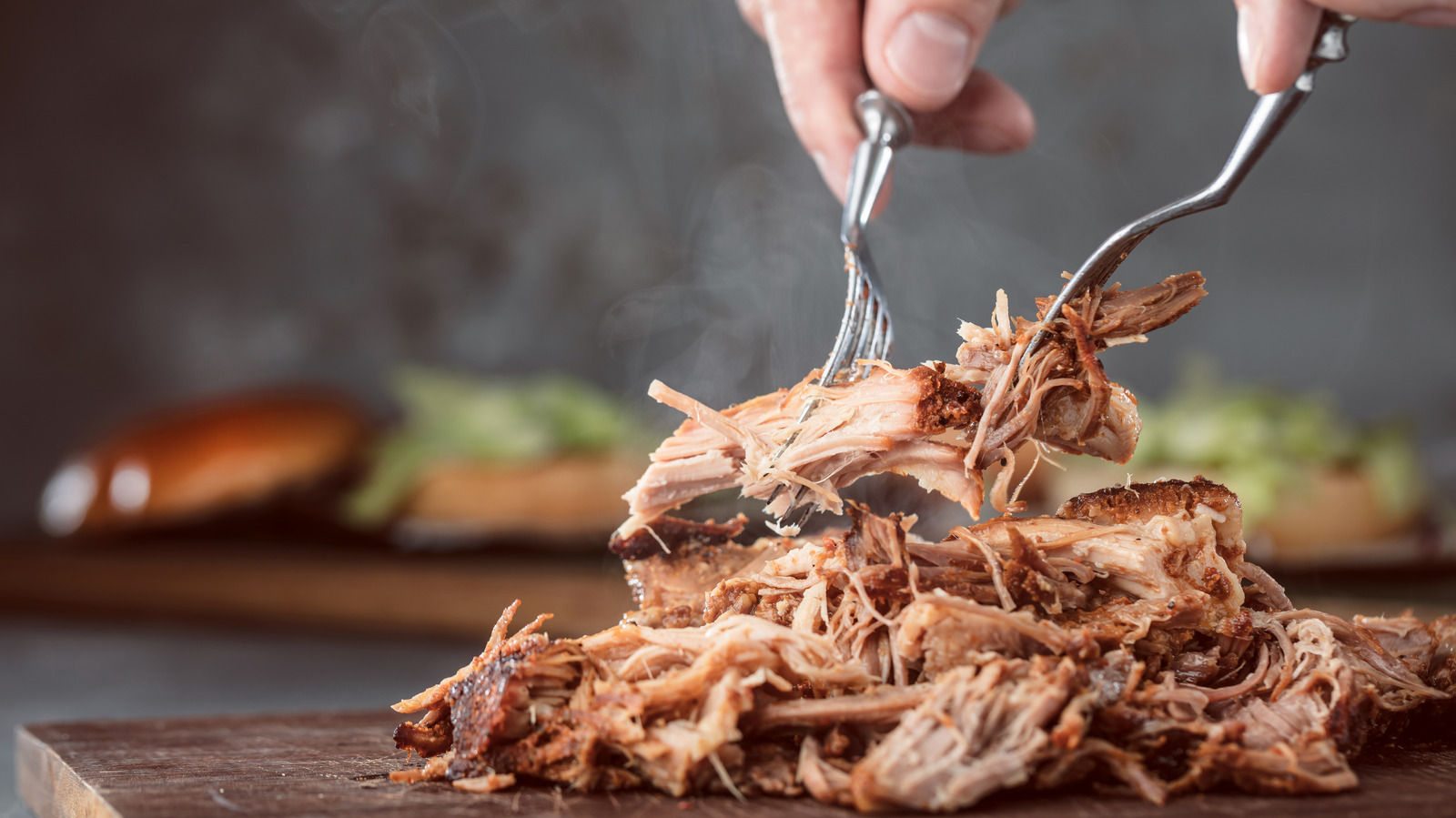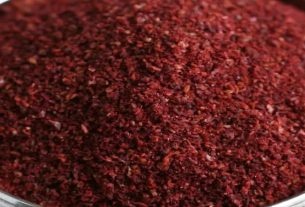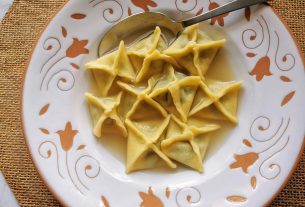Leftover pulled pork can be a saving grace after a delicious meal, but what’s the secret to keeping it just as mouthwateringly tender as the first bite?
In this article, we’ll unlock the key to properly storing and reheating pulled pork, exploring a range of methods that will have your taste buds dancing with joy.
From the classic oven to the innovative sous vide technique, get ready to turn those leftovers into a culinary masterpiece.
reheating pulled pork
To reheat pulled pork, there are several methods you can use.
One option is to reheat it in the oven by placing it on a tray in the middle of the oven and cook until the internal temperature reaches 165°F.
Another method is to reheat it on the grill using a 2-zone cooking method to prevent drying out the meat.
You can also reheat pulled pork in a crock pot by defrosting it first and setting the crock pot to low heat or keep warm setting.
Lastly, you can use the sous vide method by immersing the vacuum-sealed bag of pulled pork in a hot water bath.
It is important to ensure the internal temperature reaches 165°F to avoid any bacterial issues.
Key Points:
- Reheating pulled pork can be done using several methods.
- The oven method involves placing the pulled pork on a tray in the middle of the oven and cooking until the internal temperature reaches 165°F.
- The grill method uses a 2-zone cooking technique to prevent the meat from drying out.
- Reheating in a crockpot requires defrosting the pork first and setting the crockpot to low heat or keep warm setting.
- The sous vide method involves immersing the vacuum-sealed bag of pulled pork in a hot water bath.
- It is crucial to ensure the internal temperature reaches 165°F to avoid any bacterial issues.
reheating pulled pork – Watch Video


Pro Tips:
1. Pulled pork should be reheated slowly to maintain its tenderness and flavor. To achieve this, wrap the pork tightly in aluminum foil and place it in an oven heated to 325°F (163°C) for approximately 20 minutes per pound.
2. Did you know that pulled pork was initially made popular in the southern United States, particularly in the Carolinas? It was often cooked in pits or smokers for hours, resulting in its irresistibly smoky flavor.
3. BBQ enthusiasts debate whether to add sauce to their pulled pork before or after reheating. Some argue that adding sauce before reheating helps it penetrate the meat, while others prefer to add it afterward for a more potent and distinct taste.
4. When reheating pulled pork, it’s crucial to store it in an airtight container in the refrigerator overnight to maintain its juiciness and prevent it from drying out. This preparation method allows the flavors to meld together, resulting in a more delicious dish.
5. While many enjoy pulled pork as a main course, it can also be utilized in various other recipes. For example, you can use reheated pulled pork as a topping for nachos, in sandwiches, or even as a filling for tacos and enchiladas. Its versatility makes it perfect for experimenting with new dishes!
Oven Reheating Method
When it comes to reheating pulled pork, the oven method is a reliable choice. Here is how to ensure your pulled pork retains its optimal flavor:
-
Begin by placing the pulled pork in the middle of the oven on a tray. It is important to not overcrowd the tray to allow proper circulation of heat.
-
Next, set the oven to a temperature of 275°F. Cook the pulled pork until it reaches an internal temperature of 165°F. This will ensure that any bacteria present in the meat are killed off.
-
If you prefer a crispy and caramelized exterior, open the foil and broil the pulled pork for a few minutes. This will add a delectable crunch to the bark, enhancing the overall texture of the dish.
-
If you have stored the pork butt as a whole piece, now is the time to shred it after removing it from the oven. The result will be tender, juicy, and flavorful pulled pork, ready to be enjoyed once again.
Grill Reheating Method
To reheat pulled pork on the grill and preserve its smokiness and charred flavor, follow these steps for the best results:
- Utilize the 2-zone cooking method to prevent direct heat from drying out the meat:
- For gas grills, keep one burner off and set the other to high heat.
-
For charcoal grills, pile the charcoal on one side to create a hot zone.
-
Preheat the grill to 225°F and place the pulled pork, wrapped in foil, on the cool zone. This indirect heat will gently warm the meat without causing it to dry out.
-
Once the internal temperature of the pulled pork reaches 165°F, it’s time to crisp up the exterior. Move the pork to the direct heat side of the grill and allow it to cook for a few minutes until it achieves a desirable char.
-
If you have already shredded the pork, place it in a pan before grilling. This will ensure that the smaller pieces do not fall through the grates and get lost in the flames.
Bullet Points:
- Utilize the 2-zone cooking method
- For gas grills, keep one burner off and set the other to high heat
- For charcoal grills, pile the charcoal on one side to create a hot zone
- Preheat the grill to 225°F
- Place the pulled pork, wrapped in foil, on the cool zone
- Once the internal temperature of the pulled pork reaches 165°F, move it to the direct heat side of the grill and allow it to char for a few minutes
- If the pork has already been shredded, place it in a pan before grilling.
Crock Pot Reheating Method
To achieve tender and juicy results when reheating pulled pork in a crock pot, follow these steps:
- Defrost the frozen pulled pork for 24 hours in the refrigerator before reheating. This ensures even cooking and avoids cold spots in the meat.
- Set the crock pot to low heat or the “keep warm” setting. Gradual heating allows the flavors to meld and intensify.
- Prevent the meat from drying out by adding a splash of liquid to the pot. This can be leftover barbecue sauce, apple juice, or chicken broth. The added moisture helps maintain the juiciness of the pork.
- Reheat the pulled pork in the crock pot for a few hours, tasting occasionally to ensure it reaches the desired level of tenderness.
- Once heated through, your pulled pork will be ready to enjoy again.
Sous Vide Reheating Method
Sous vide is a cooking method that involves immersing food in a hot water bath inside a vacuum-sealed bag. This technique can also be used to reheat pulled pork. If you want to achieve a precise and controlled reheating process, follow these steps:
-
Fill a pot or container using the sous vide method, with water and set the temperature to 165°F. This is the minimum internal temperature needed to ensure that the pulled pork is safe to eat.
-
Place the vacuum-sealed bag of pulled pork into the water bath and allow it to cook for the desired amount of time. The length of time will vary depending on the size and thickness of the pork, but make sure it reaches the target internal temperature.
-
Once the pork has finished reheating, carefully remove it from the bag, being cautious not to lose any flavorful juices that may have accumulated inside. If desired, you can briefly sear the pork on a hot skillet or grill to achieve a flavorful crust.
The sous vide method is an excellent choice for reheating pulled pork. It ensures precise temperature control and helps retain the moisture and tenderness of the meat.
- Sous vide is a cooking method that involves immersing food in a hot water bath inside a vacuum-sealed bag.
- Reheating pulled pork using sous vide ensures precise temperature control.
- Set the water bath temperature to 165°F, the minimum internal temperature for safe consumption.
- Cook the vacuum-sealed bag of pulled pork until it reaches the desired internal temperature.
- Preserve the flavorful juices by carefully removing the pork from the bag after reheating.
- Optionally, sear the pork on a hot skillet or grill for a flavorful crust.
Storing Pulled Pork Safely
Properly storing pulled pork is essential to retain its quality and prevent any risk of foodborne illness. Here are some guidelines for safe storage:
-
To store pulled pork, wrap it tightly in foil and place it in a plastic bag to prevent any air from entering. This will help maintain its moisture and protect it from freezer burn.
-
For long-term storage, it is recommended to use a vacuum sealer. Vacuum-sealed bags not only preserve the food but also save freezer space, allowing you to conveniently store and reheat your pulled pork whenever desired.
-
Fortunately, vacuum sealers have become affordable and widely available, making them a practical investment for any home cook.
-
When sealing the pulled pork, it is helpful to weigh out equal portion sizes before freezing. This prevents wastage since you can defrost and consume only the required amount, reducing the chances of leftovers going to waste.
-
To ensure clarity and organization, label each vacuum-sealed bag with the date, weight, and contents of the pulled pork. This will make it easier to identify and plan meals based on available portions.
-
Remember to handle and store pulled pork with proper care to ensure its safety and quality.
Refrigeration And Freezing Guidelines
Refrigerated pulled pork can be safely kept for approximately four days. If not consumed within this timeframe, it is best to freeze it to maintain its quality.
Frozen pulled pork can be stored for two to three months without significant loss of quality. Be sure to follow proper storage techniques, such as using vacuum-sealed bags or tightly wrapped foil and plastic bags, to prevent freezer burn.
Remember to allow the pulled pork to cool completely before refrigerating or freezing. Placing hot meat in the refrigerator or freezer can cause condensation, which can negatively affect the texture and flavor of the meat.
- Refrigerated pulled pork: up to four days
- Frozen pulled pork: two to three months (vacuum-sealed bags or tightly wrapped foil and plastic bags recommended to prevent freezer burn)
Allow the pulled pork to cool completely before refrigerating or freezing.
Caution About Reheating Pulled Pork Multiple Times
Reheating pulled pork multiple times increases the chances of bacterial growth and compromises its safety. It is recommended to reheat pulled pork only once before consuming.
If you have reheated more pulled pork than you can consume in one sitting, it is advisable to store it in single-serving portions. This way, you can defrost and reheat only the required amount, reducing food wastage while maintaining optimal flavor and quality.
- Store pulled pork in single-serving portions
- Defrost and reheat only what you need
Rapid Cooling And Quality Degradation
Rapidly cooling reheated pulled pork after each use can help reduce bacterial growth but may cause a slight degradation in quality. The process of reheating and cooling can lead to a loss of moisture and tenderness in the meat.
- While rapid cooling may impact the overall texture of the pulled pork, it is a necessary step to ensure food safety.
- The slight loss in quality can be mitigated by reheating the pork gently to restore its tenderness and juiciness.
Single-Serving Portion Advice
To minimize waste and ensure portion control, it is advisable to divide the pulled pork into single-serving portions before freezing. This allows you to thaw and reheat only the required amount, preventing the need for unnecessary reheating.
The recommended serving size for pulled pork is approximately 5 ounces per adult. If serving children, consider halving the portion for younger ones or adjusting according to their appetite.
By storing the pulled pork in individual, sealed vacuum bags, you can easily defrost and heat up the portions as needed, ensuring minimal effort and maximum flavor.
- Divide pulled pork into single-serving portions before freezing
- Recommended serving size: 5 ounces per adult
- Adjust portion for children
- Store in individual, sealed vacuum bags for easy defrosting and heating.
“To minimize waste and ensure portion control, it is advisable to divide the pulled pork into single-serving portions before freezing.”
Creative Uses For Leftover Pulled Pork
Leftover pulled pork provides endless opportunities for creative culinary adventures. Here are a few suggestions on how to utilize your leftovers:
-
Loaded Nachos: Top a bed of tortilla chips with reheated pulled pork, melted cheese, diced onions, jalapeños, and a dollop of sour cream for a delicious and hearty snack or appetizer.
-
Stuffed Potato Skins: Scoop out the flesh of baked potatoes, leaving a thin layer intact. Fill the hollowed-out skins with reheated pulled pork and a sprinkle of shredded cheese. Bake until the cheese is melted and bubbly for a satisfying and indulgent dish.
-
BBQ Pulled Pork Grilled Cheese: Spread barbecue sauce on one side of bread slices. Layer shredded cheese and reheated pulled pork between the slices, then grill in a buttered skillet until golden and oozy. The combination of smoky pulled pork and melty cheese will take your grilled cheese sandwich to new heights.
These are just a few examples of the countless ways to enjoy leftover pulled pork. Let your creativity and taste buds guide you to create unique and delicious meals utilizing this versatile meat.

You may need to know these questions about reheating pulled pork
What’s the best way to reheat pulled pork?
The best way to reheat pulled pork is by using a slow cooker. Place the shredded pork in the slow cooker and add a small amount of liquid, such as apple juice or broth, to keep the meat moist. Set the slow cooker to a low temperature and let it heat for a few hours, allowing the flavors to meld together. This method ensures that the pulled pork remains tender and juicy, without drying out or losing its original flavors.
Another alternative is to reheat the pulled pork on the stovetop. Place the shredded pork in a saucepan and add a splash of liquid, such as cider vinegar or BBQ sauce, to enhance the flavor. Heat the pork over low to medium heat, stirring occasionally to evenly distribute the heat and prevent any sticking or burning. This method allows for better control over the temperature and cooking time, ensuring the pulled pork is thoroughly heated while maintaining its original texture and taste.
How do you reheat pulled pork without drying it out?
To reheat pulled pork without drying it out, you can follow these steps to retain its moisture and tenderness. First, preheat your oven to a low temperature of 250°F. This gentle heat will allow the meat to warm up gradually without causing it to dry out. Next, place the pulled pork in a baking dish and add some of the leftover juices. Alternatively, you can use broth, apple juice, or even a small amount of water. This will keep the meat moist as it reheats and prevent it from losing its flavorful juices. By following these steps, you can enjoy tender and succulent pulled pork that tastes just as delicious as when it was freshly cooked.
How do you reheat pulled pork and make it moist?
To reheat pulled pork and keep it moist, a simple method involves using a slow cooker. Place the leftover pulled pork in the slow cooker and add a bit of barbecue sauce, broth, or even some apple juice to enhance the flavors and keep the meat moist. Set the slow cooker to low heat and let the pork slowly reheat for a few hours. The low heat and moisture from the liquid will help maintain the pork’s moisture and tenderness, resulting in a delicious and moist meal.
Another way to reheat pulled pork while maintaining its moistness is using the stovetop. Heat a skillet or frying pan over low heat and add a splash of barbecue sauce, broth, or other liquid to the pan. Once the liquid is warm, add the pulled pork, stirring occasionally to evenly distribute the sauce and heat the meat through. This method allows for quick reheating while ensuring the pulled pork remains moist and flavorful.
Can I make pulled pork the day before and reheat?
Yes, you can definitely make pulled pork the day before and reheat it. In fact, making it ahead of time and refrigerating it allows the flavors to develop and intensify, resulting in even more delicious pulled pork. The meat retains its moisture and flavor exceptionally well when reheated, making it a convenient option for those who want to prepare a meal in advance without compromising on taste. Whether you choose to refrigerate it for a day or two or freeze it for a longer period, the pulled pork will still maintain its delightful flavor when reheated, making it a versatile and convenient dish to have on hand.
Reference source
https://www.smokedbbqsource.com/how-to-reheat-pulled-pork/
https://kitchenlaughter.com/how-to-reheat-pulled-pork/
https://www.tastingtable.com/745885/heres-how-you-should-be-reheating-pulled-pork/
https://www.usatoday.com/story/life/food-dining/2022/08/31/make-ahead-tailgate-food-pulled-pork-recipe/7954751001/



